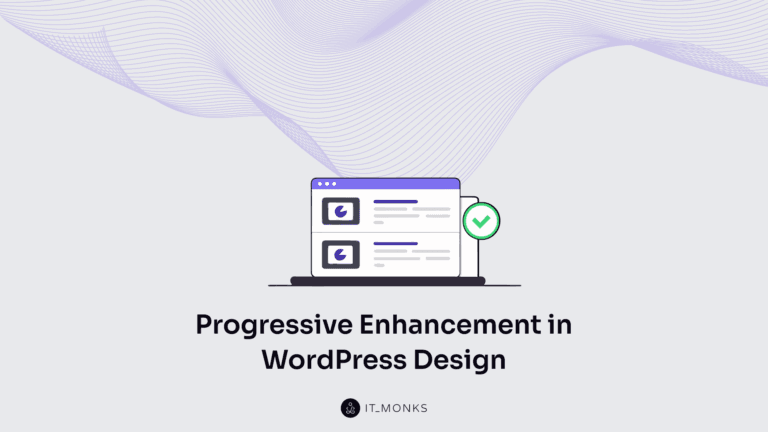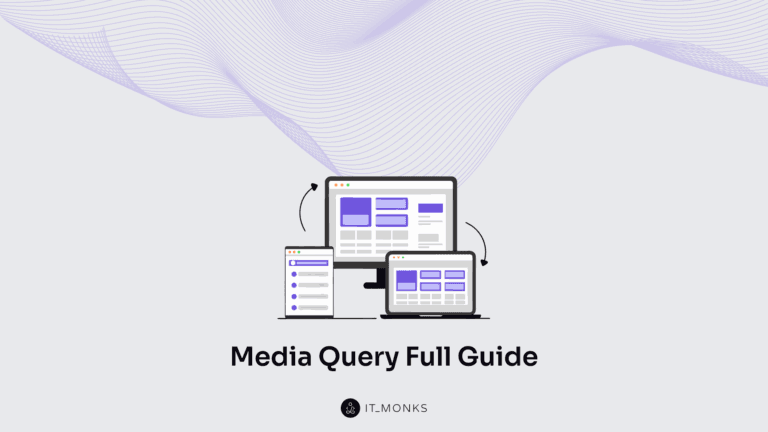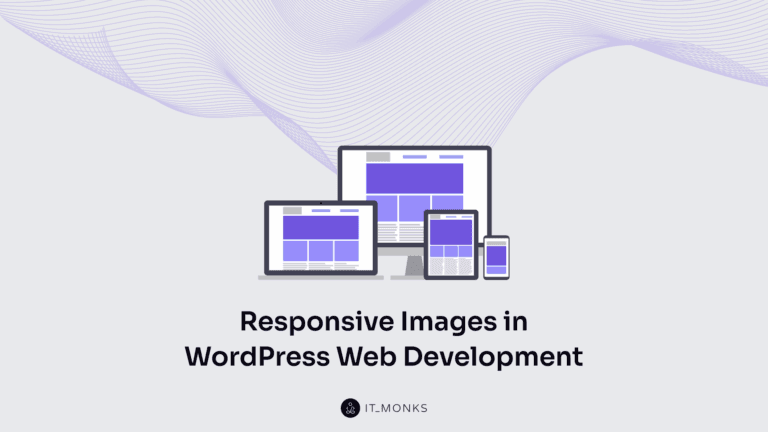Front-End Development in WordPress
Table of Contents
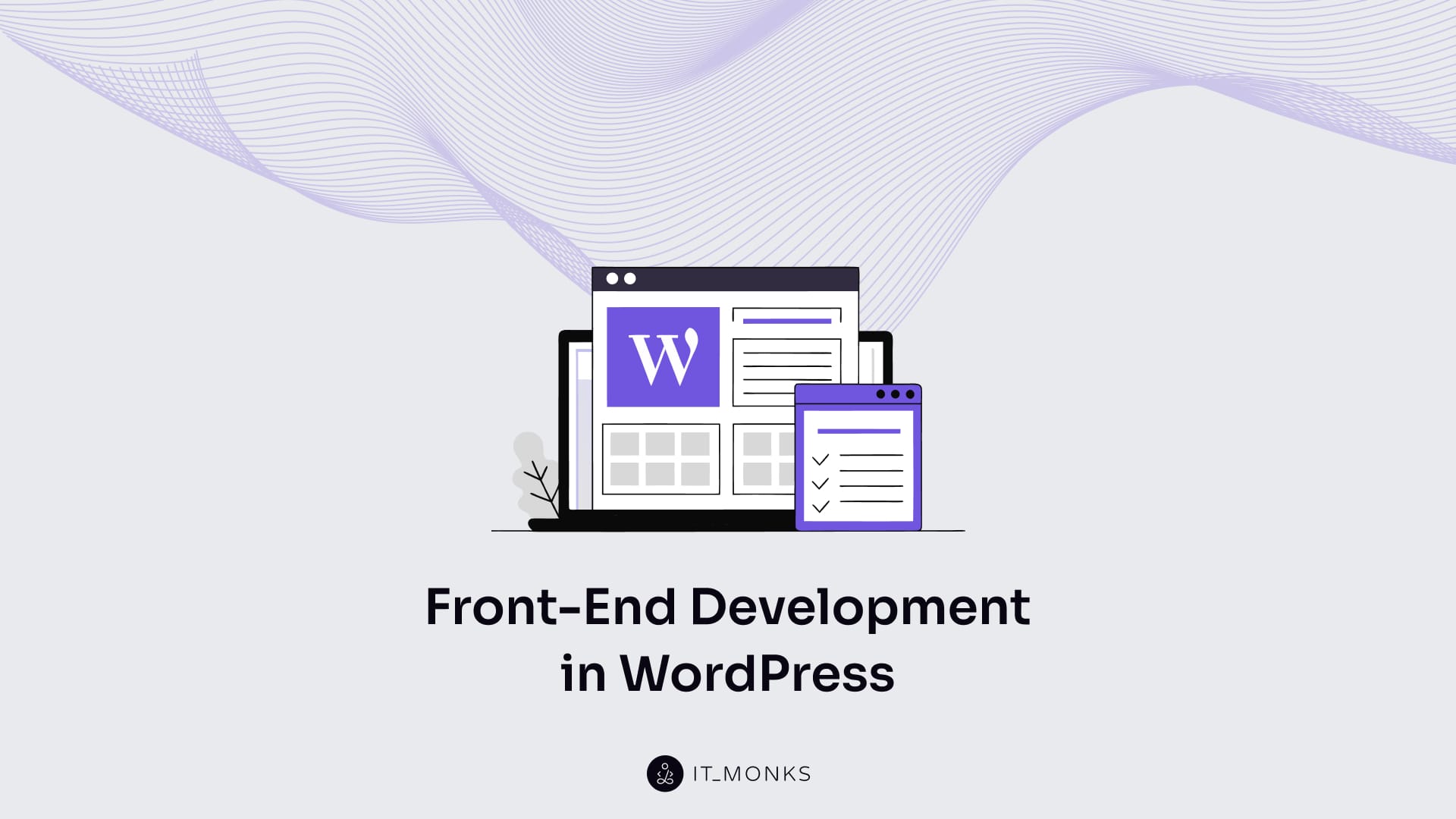
Front-end development in WordPress is the process of designing and implementing the user-facing part of a WordPress website. This encompasses everything a visitor sees and interacts with (including visual design, layout, content presentation, and interactive elements) and is structured through a system of theme templates, block hierarchies, and client-side asset delivery. It operates within WordPress’s core rendering architecture, where layouts are generated via PHP-based template files and enriched through block-based interfaces provided by the Gutenberg editor.
This process is structured around how different content types (such as pages, posts, blocks, and reusable components) interact to produce the final, rendered HTML in the browser. The template hierarchy and block structure shape presentation logic, while child themes and front-end customization techniques allow developers to override, extend, or inject styling and functionality without modifying the base theme logic.
Client-side assets, including CSS and JavaScript, play a central role in controlling not only the appearance and interactivity of the interface but also its performance and load behavior. These assets must be executed within a secure, accessible DOM structure, aligning with best practices in web performance and inclusive design.
Understanding Front-End in WordPress
The front-end in WordPress refers to the user-facing side of a website, which includes the site’s layout, design, content presentation, and interactive behavior. It focuses on building and customizing the interface using themes, templates, the Gutenberg block editor, and client-side technologies such as HTML, CSS, and JavaScript.
Frontend development within WordPress connects design principles with technical execution, ensuring that templates, styles, and scripts work seamlessly to create intuitive, responsive user experiences. WordPress’s rendering system ties backend data (such as posts, metadata, and custom fields) with the front-end interface using PHP-based templates, REST API endpoints, and dynamic block rendering. Theme templates define layout logic and separate content from presentation, while features like shortcodes, widgets, and block overrides offer granular control.
The introduction of Full Site Editing and block-based layout engines blurs the traditional line between backend control and frontend behavior. These tools allow real-time structural changes, merging editorial workflows with interface logic. CSS and JavaScript do not simply style content. They operate within the WordPress rendering pipeline, modifying the DOM based on nested template hierarchies and editor outputs.
Theme Development and the Front-End
Theme development in WordPress is the process of building the visual design and layout structure that defines how content is displayed on a website’s front end. It involves creating and organizing a collection of theme files (including PHP templates, CSS stylesheets, and JavaScript scripts) that work together to render backend content into styled, interactive, and accessible web pages for users.
Each theme defines layout structure through its template hierarchy, controls presentation logic via style.css and functions.php, and manages dynamic content rendering using asset enqueuing and template injection. It interfaces directly with content types (posts, pages, widgets, and blocks) by generating HTML output from PHP-driven logic.
Modern theme features, such as theme.json, centralize design variables (typography, spacing, and color systems), making global and block-level customization accessible through the WordPress editor. This enables themes to serve not just as design shells but as executable rendering systems that respond to contextual content and editor-defined overrides.
Child themes extend this model by allowing targeted visual or behavioral changes without altering the core structure of a parent theme. This preserves stability while supporting brand-specific customization across the front end.
Template Hierarchy in WordPress
The WordPress Template Hierarchy is a rule-based system that determines which theme file is used to display specific content types (like posts, pages, or archives).
WordPress follows a prioritized order to select the most suitable template, enabling developers to control how different parts of a site are presented. This allows developers to consistently control visual output across page types, while maintaining structural integrity and semantic coherence.
Styling WordPress Themes with CSS
CSS in WordPress themes defines the visual layer of the front-end by targeting the HTML output generated by theme templates, blocks, and dynamic content structures. The core stylesheet (style.css) serves as both a styling hub and a theme metadata file, providing a central location for visual customization.
Additional styles are injected using the wp_enqueue_style() function in functions.php, ensuring they load at the right point in the rendering process. This approach enables developers to style elements in a controlled, hierarchical manner that aligns with the theme’s structure.
JavaScript in Themes
JavaScript enhances the front-end behavior of WordPress themes by enabling dynamic interactions, animations, and client-side logic. These scripts are added through the functions.php file using the wp_enqueue_script() function, ensuring proper execution within the theme’s rendering lifecycle.
Once loaded, JavaScript targets DOM elements generated by templates, blocks, or widgets, adding interactivity to content that’s already structured by the theme. This includes everything from modals and toggles to AJAX-based updates and real-time input handling.
Child Themes for Customization
A child theme in WordPress is a lightweight extension of a parent theme that allows you to customize the appearance and functionality without modifying the original theme’s code. By inheriting layout logic, styles, and functions, child themes enable safe and isolated modifications that maintain the core theme’s integrity.
Developers can override specific files (like style.css, functions.php, or individual templates) based on WordPress’s file loading priority. This makes it easy to apply brand-specific styles, restructure layouts, or add custom behavior without breaking the parent theme’s structure.
Gutenberg and Block-Based Front-End
Gutenberg, WordPress’s block editor, introduced a modular system where content is built from reusable blocks representing elements like text, images, and buttons. This block-based approach replaces static templates, such as page.php or single.php, with a dynamic layout composed visually through self-contained blocks that have their own markup and styling.
These blocks are built and managed within the Gutenberg editor, allowing users to define layout and content directly through a visual interface. Blocks can be native to WordPress or custom-developed, and they support features such as reusable layouts, dynamic data injection, and consistent design patterns throughout the site.
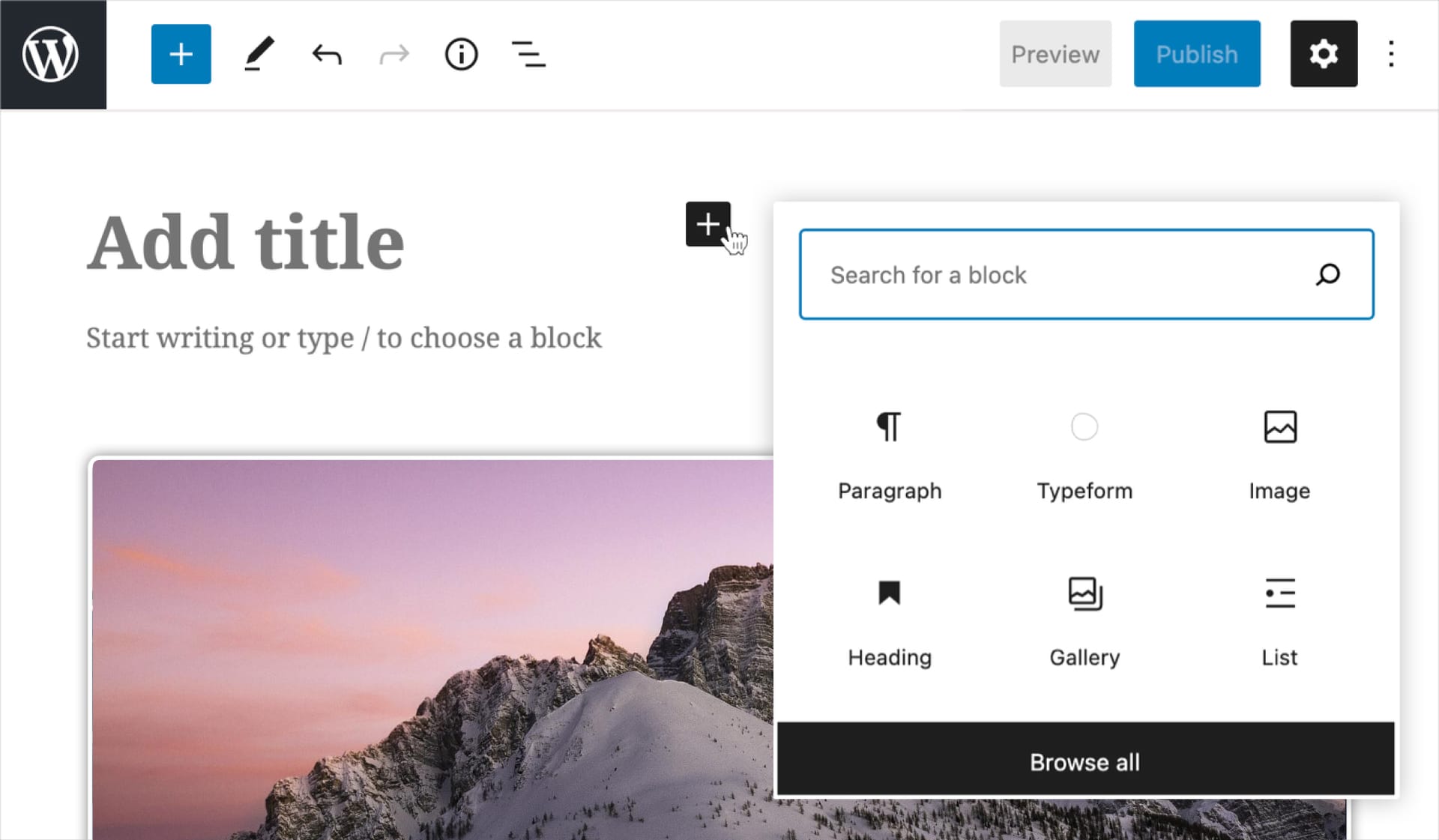
Block Development with React
Block development in WordPress leverages React to define custom Gutenberg blocks that control both the editor experience and front-end output. Using @wordpress/blocks and @wordpress/element, each block is built as a React component with clearly defined edit and save functions written in JSX. The edit function governs the real-time UI within the block editor, while the save function generates the final HTML that appears on the front end.
This component-based structure enables developers to create modular, reusable content units that maintain a consistent link between the editor interface and the visual output. By embedding logic, markup, and content fields into the same block architecture, WordPress ensures seamless integration between authoring workflows and rendered design.
Styling Blocks
Styling Gutenberg blocks involves targeting the semantic HTML they output using scoped CSS rules, class hooks, or theme-level configurations. Block styles can be defined through the theme.json file, inline block attributes, or external stylesheets enqueued via wp_enqueue_style(). Each block outputs markup with specific class names that can be used to apply global or localized design rules.
Unlike the editor preview, front-end block styling prioritizes consistency with the active theme’s design system, ensuring that layout and appearance align with broader UI standards. This separation of editing appearance and rendered styling supports reusable components that adapt visually across different site regions.
Full Site Editing (FSE)
Full Site Editing (FSE) transforms WordPress into a fully block-driven front-end rendering system. Instead of relying on traditional PHP-based template files, FSE uses visual block templates and template parts defined within the Site Editor. These templates are powered by theme.json, which controls layout rules, typography, color schemes, and other global design variables.
FSE enables developers and content editors to visually manage structural regions, including headers, footers, and archive layouts, directly within the block editor, thereby eliminating the need for manual code editing. By centralizing layout control into the Gutenberg framework, FSE replaces file-based logic with a semantic, component-driven model that defines the front end as a composition of interactive, editable blocks.
Front-End Customization in WordPress
Front-end customization in WordPress is the process of modifying the visual appearance and interactive behavior of a website without altering its core rendering architecture. Instead of rewriting template logic, customization layers act on the output generated by themes, blocks, and templates, modifying the DOM through editor tools, injected CSS/JS, or targeted code snippets.
Customization can be implemented through multiple channels, including the block editor, theme customizer, theme.json, inline styles, and script enqueuing. Each method enables modifications to styles, layout structure, or interface behavior by targeting specific elements in the rendered front end. These changes refine or override default theme behavior, allowing designers and developers to introduce brand-specific visuals, responsive adjustments, or user interaction enhancements, while preserving the structural consistency of the original theme files.
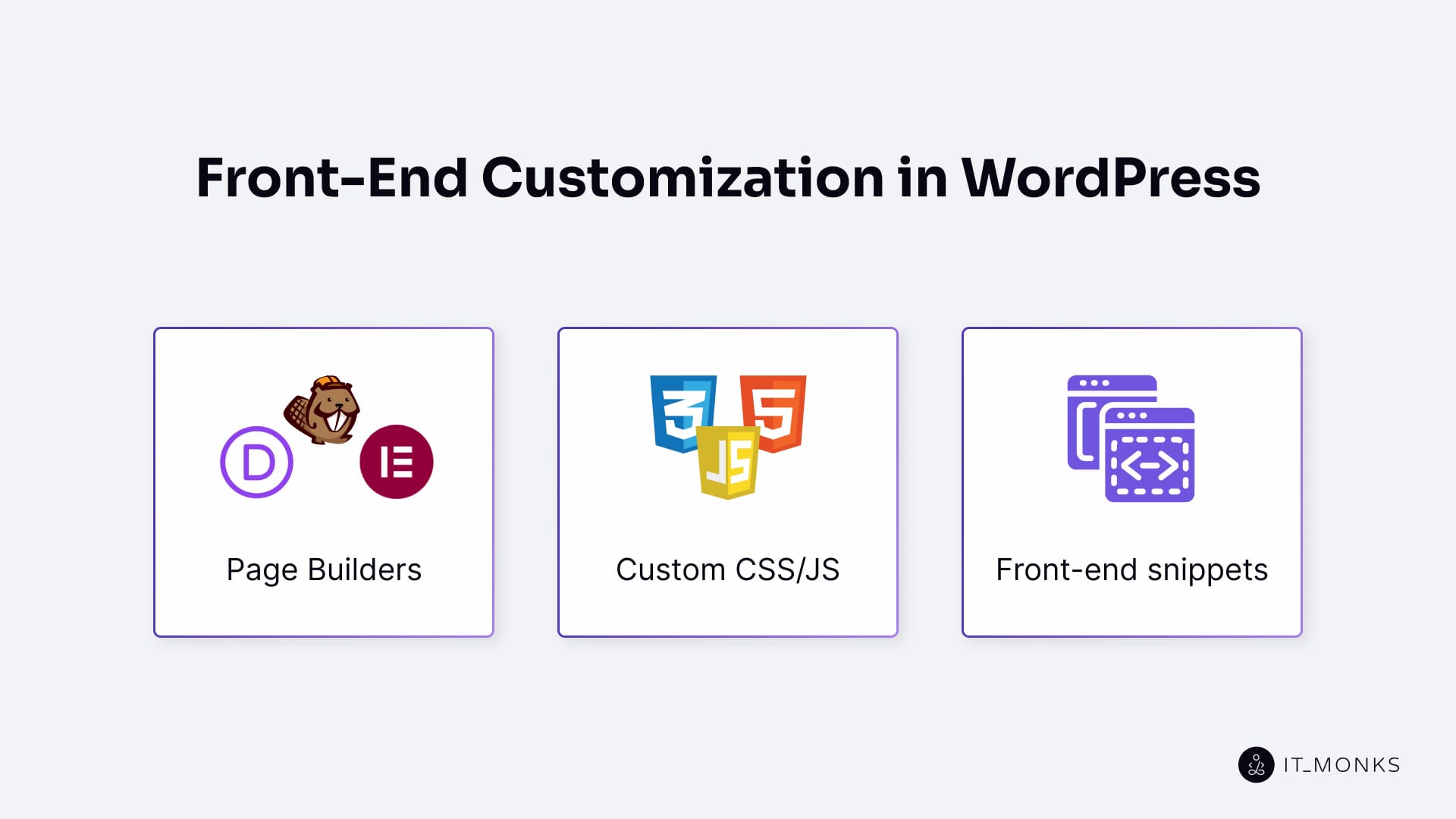
In many cases, businesses rely on custom WordPress development to achieve deeper levels of front-end customization. This approach goes beyond surface styling, enabling tailored solutions that integrate advanced functionality, optimize performance, and align fully with unique branding needs.
Using Page Builders (Elementor, Divi, Beaver Builder)
Page builders like Elementor, Divi, and Beaver Builder operate as plugin-based visual editors that construct custom front-end layouts by injecting their own HTML, CSS, and JavaScript into the WordPress rendering pipeline. Unlike traditional themes that follow the template hierarchy, these builders generate page output dynamically, replacing default layout files with modular, builder-generated markup.
Each builder operates through a drag-and-drop interface, enabling users to create layouts using configurable blocks, sections, and widgets. These components embed their styling and interactivity directly into the DOM, allowing for advanced layout control without requiring edits to PHP files or core theme assets. Because they intercept rendering at the page level, builders act as structural override systems layered on top of the WordPress theme framework, preserving CMS logic while enabling complete visual control.
Adding Custom CSS/JS
Custom CSS and JavaScript in WordPress provide a direct way to enhance or override front-end presentation and functionality without modifying theme files. These assets are typically injected using the wp_enqueue_style() and wp_enqueue_script() functions, added via the WordPress Customizer, or introduced through plugin settings.
Targeting DOM elements output by templates, blocks, or page builders, custom styles and scripts act as non-destructive overlays that adjust layout behavior, interactivity, or responsiveness. Whether used for quick design fixes or scoped visual enhancements, this method preserves the original theme structure while enabling flexible, maintainable customization across site pages.
Common Snippets for Front-End Tasks
Front-end snippets in WordPress are compact, purpose-specific code fragments, written in PHP, CSS, or JavaScript, that allow developers to perform targeted visual or behavioral modifications to the rendered interface. These snippets often run via functions.php, custom plugins, or inline script injections and are designed to work within the existing theme and block architecture.
By hooking into specific DOM elements or WordPress actions, snippets can implement UI tweaks such as toggles, animations, conditional visibility, or layout refinements. Their modular nature makes them ideal for scalable enhancements without requiring template rewriting, offering a lightweight approach to solving common design challenges and adding new interaction patterns.
Performance Optimization for WordPress Front-End
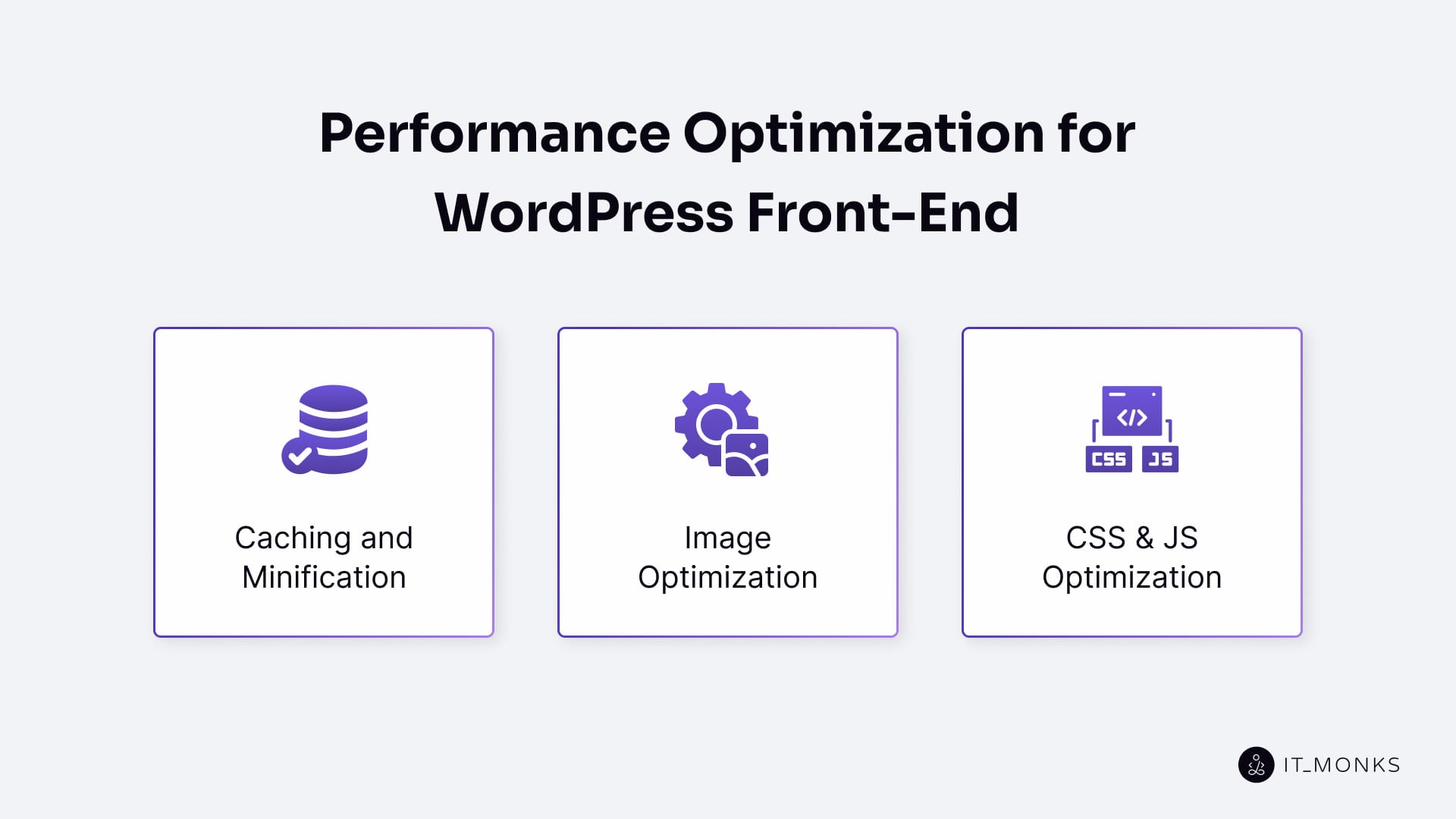
Front-end performance optimization in WordPress focuses on enhancing how rendered assets (such as HTML, CSS, JavaScript, and media files) are transmitted and executed by the browser to improve speed, responsiveness, and user experience. Unlike structural changes to themes or templates, this optimization layer operates after the DOM has been constructed, refining the payload delivered to the client without altering the layout logic.
Key optimization techniques include:
- Minifying and combining assets to reduce file size and the number of HTTP requests.
- Deferring non-critical JavaScript to prevent render-blocking behavior.
- Lazy-loading media to delay image or video loading until needed.
- Implementing browser and server-side caching to serve content more efficiently.
- Using content delivery networks (CDNs) to reduce geographical latency.
Caching and Minification
Caching and minification are two core techniques used to accelerate WordPress front-end performance by improving how assets are delivered to the browser.
- Caching stores pre-rendered versions of pages, scripts, and stylesheets. This reduces server processing time by serving static content on subsequent visits, resulting in significantly lower page load times.
- Minification compresses HTML, CSS, and JavaScript by removing whitespace, comments, and unnecessary characters, shrinking file sizes for faster transmission and parsing.
Both processes operate after the content is generated, altering only the delivery layer, not the code logic or theme structure. Together, caching and minification reduce HTTP requests, optimize browser workload, and contribute significantly to a faster, more efficient front-end experience.
Image Optimization
Image optimization in WordPress is the process of reducing image file sizes to improve front-end performance without compromising visual quality or layout design. Images are often the heaviest assets on a page, and optimizing them has a direct impact on page speed, bandwidth use, and user experience, especially on mobile devices.
Common techniques include:
- Compression (lossy or lossless)
- Responsive image sizing (srcset and sizes attributes)
- Lazy loading to delay off-screen image loading
- Using modern formats like WebP or AVIF
Image optimization targets the visual payload, not the structure or styling, ensuring that media loads efficiently while maintaining design fidelity. It plays a critical role in reducing First Contentful Paint (FCP) and improving Core Web Vitals.
CSS & JS Optimization
CSS and JavaScript optimization focuses on improving how style sheets and scripts are loaded, parsed, and executed in the browser without changing their logical structure or design intent. These optimizations ensure that essential visual and interactive features load quickly, without delaying the page rendering process.
Key strategies include:
- Minifying and combining files to reduce size and request count
- Deferring non-critical scripts using defer or async attributes
- Inlining critical CSS for faster initial rendering
- Eliminating render-blocking resources during page load
Security in WordPress Front-End
Front-end security in WordPress focuses on protecting the browser-rendered interface (specifically the DOM, client-side scripts, and interactive elements) from threats that arise after the page is delivered to the user. These threats include cross-site scripting (XSS), insecure script injection, and unsafe content delivery.
Unlike server-side vulnerabilities, front-end security issues arise within the user’s browser, where exposed HTML, forms, or unvalidated inputs can serve as vectors for malicious behavior.
To mitigate these risks, WordPress developers must:
- Sanitize and validate user input before rendering it to the DOM
- Escape dynamic content in themes and blocks
- Ensure assets are loaded over HTTPS to prevent mixed content vulnerabilities
- Avoid inline scripts unless explicitly safe and necessary
- Restrict third-party content embeds and use Content Security Policies (CSP) where applicable
Safe Form Handling and Validation
Safe form handling in WordPress front-end development focuses on validating and sanitizing user input before it interacts with the DOM. Forms like comment sections, contact fields, and sign-up interfaces are common entry points for malicious content, making them prime targets for injection attacks.
To mitigate these risks:
- Front-end validation ensures that input follows expected patterns (e.g., email addresses, numbers, required fields).
- Sanitization functions remove or escape unsafe data before outputting it to the browser.
- Escaping dynamic content prevents JavaScript injection and rendering issues.
By applying these rules at both the client and server levels, WordPress reinforces interface stability, defends against client-side exploits (e.g., XSS), and ensures that only safe, structured data is processed and rendered.
Avoiding Insecure Inline Scripts
Inline scripts, JavaScript code embedded directly in HTML, pose a significant front-end security risk in WordPress development, especially when tied to dynamic content or user input. While convenient, inline scripts bypass WordPress’s script registration and sanitization mechanisms, increasing vulnerability to cross-site scripting (XSS) and DOM injection attacks.
To ensure secure script handling:
- Avoid inline JavaScript for dynamic logic or event binding.
- Use wp_enqueue_script() to load scripts from isolated, registered files.
- Encode user-generated data before outputting it in scripts or templates.
Minimizing inline code reduces the browser’s attack surface and aligns with modern Content Security Policies (CSP), which often block or flag inline scripts by default.
HTTPS and Mixed Content Issues
Mixed content errors occur when a secure (HTTPS) WordPress site loads assets (such as images, scripts, or fonts) over non-secure (HTTP) connections. This protocol inconsistency triggers browser-level security measures that block or downgrade these resources, leading to broken layouts, missing content, and script failures.
To prevent these issues:
- Ensure all asset URLs use HTTPS, including external resources, media uploads, and theme/plugin dependencies.
- Use wp_enqueue_*() functions with protocol-relative or secure URLs.
- Audit content inserted via custom fields, plugins, or editors to fix legacy HTTP links.
By enforcing HTTPS across all front-end asset layers, you guarantee secure rendering, uninterrupted layout integrity, and compliance with modern browser security standards.
Accessibility in WordPress Front-End
Accessibility in WordPress front-end development is the practice of creating interfaces that are usable by all individuals, including those who rely on assistive technologies such as screen readers, keyboard navigation, and voice input. This involves structuring the DOM output from themes, templates, and blocks with semantic HTML and accessibility-first design principles.
Key accessibility strategies include:
- Using semantic tags (e.g., <header>, <nav>, <main>, <section>) to clarify document structure
- Implementing ARIA roles and landmarks where necessary to enhance screen reader interpretation
- Ensuring keyboard navigability by managing focus order and avoiding script-based navigation traps
- Maintaining contrast ratios, label associations, and input cues for visual clarity and form usability
Tools for WordPress Front-End Development
WordPress front-end development relies on a hybrid toolchain that combines general web development utilities with WordPress-specific frameworks, enabling efficient UI creation, code validation, and performance optimization.
General Front-End Tools:
- Visual Studio Code: a powerful, extensible code editor for managing theme, block, and asset files.
- Webpack / Vite: modern bundlers for compiling and optimizing JavaScript and CSS assets for production.
- PostCSS / Sass: preprocessors that streamline scalable, modular CSS architectures.
- ESLint / Stylelint: linters that enforce syntax and style consistency across JavaScript and CSS.
- Chrome DevTools / Lighthouse: tools for real-time DOM inspection, accessibility auditing, and performance profiling.
WordPress-Specific Development Tools:
- WP-CLI: a command-line interface to automate theme/plugin tasks like scaffolding and configuration.
- @wordpress/scripts: a standardized build configuration using Babel and Webpack, tailored for block and theme development.
- Create-block: a scaffolding tool for generating custom Gutenberg blocks with pre-wired structure and dependencies.
- Theme Check: a static analysis tool to validate themes against WordPress coding standards and architectural guidelines.
Gutenberg Editor: a React-powered visual interface for composing content via reusable, block-based components.
Contact
Don't like forms?
Shoot us an email at [email protected]

Send a Project Brief
You need to load content from reCAPTCHA to submit the form. Please note that doing so will share data with third-party providers.
More InformationYou are currently viewing a placeholder content from Turnstile. To access the actual content, click the button below. Please note that doing so will share data with third-party providers.
More InformationYou are currently viewing a placeholder content from Facebook. To access the actual content, click the button below. Please note that doing so will share data with third-party providers.
More InformationYou are currently viewing a placeholder content from Instagram. To access the actual content, click the button below. Please note that doing so will share data with third-party providers.
More InformationYou are currently viewing a placeholder content from X. To access the actual content, click the button below. Please note that doing so will share data with third-party providers.
More Information
